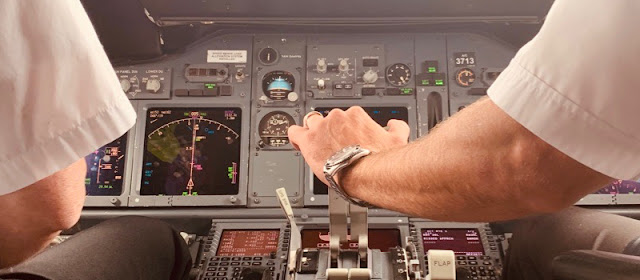FAA MEDICALS
Demystifying the FAA Class 1 Medical Examination: A Step-by-Step Guide
(by Russ Sherwood; December 29, 2019; Ormond Beach, FL)
The FAA Class 1 medical examination often raises questions and uncertainties for aspiring aviators in the United States. While several informative blogs exist on this subject, we've decided to provide a comprehensive guide to shed light on the process and requirements.
Understanding FAA Medical Classifications:
The FAA categorizes aviation medicals into three classes: Class 1, Class 2, and Class 3. Class 3 is designed for non-professional pilots, such as Private Pilot License (PPL) holders. Class 2 is applicable to all other pilots unless they are airline pilots, for whom Class 1 is mandatory. Nevertheless, a PPL or Commercial Pilot License (CPL) holder can opt for a Class 1 medical if they plan to obtain an Airline Transport Pilot (ATP) license in the future.
Differences between these classes are minimal, with the primary distinction being that Class 1 medical applicants must undergo an EKG heart assessment. Additionally, many are unable to maintain a Class 1 medical after reaching the age of 65, aligning with the mandatory retirement age of 65 for U.S. airline pilots.
Obtaining an FAA Class 1 Medical:
The process of acquiring an FAA Class 1 medical is very straightforward. You begin by contacting your local FAA medical examiner, often referred to as "AME" (Find your nearest AME here), and scheduling an appointment. Your AME will request that you complete a MedXpress form, which has been in use for approximately 3-4 years. MedXpress is an electronic system for submitting and tracking all medical applications.
The form requires you to provide information about your medical history, current medical issues, prescribed medications, and more. Upon completion, you will receive a one-time control number, which you must note and bring with you to your medical appointment. The AME will use this control number to access and review your application during the examination.
The FAA Medical Examination: what to expect?
The FAA medical examination is typically a low-stress and friendly encounter which lasts 15-20 minutes. It's important to note that unlike in most countries in South-East Asia, the FAA AMEs are not government employees but private self-employed licensed physicians who specialize in aviation medicine and physiology. Their goal is to retain a customer by not just conducting a thorough medical examination, but also by creating a relaxed and trusting environment in their office. This is a compete 180 from the government medical building I had to deal with in China and Indonesia, where a Class 1 medical could take the whole day.
- - Measure your blood pressure.
- - Request a urine sample and perform a quick chemical test to check for sugar or other issues.
- - Conduct a brief medical evaluation, including an eye assessment (using a stethoscope), a lung and heart check (using an audio-scope), and a nerve test (using a reflex hammer), weight-heigh check to ensure that your BMI is below 35 (if it is - you may be referred to sleep apnea study). As I said, this entire medical check usually takes about 15-20 minutes.
Following the medical examination, your vision will be assessed. This test evaluates vision acuity, astigmatism, and color blindness. You are permitted to wear prescription glasses or contact lenses during this test. To pass, you must demonstrate 20/20 vision with the corrective lenses.
Believe me or not, by the hearting test in not actually assessed by using special audio equipment and solent booths, like it is done in Asia. Instead, the AME will ask you several questions (like your age, and what airline you work for, and so on) and, if you can provide a short but coherent answer, your hearing will be considered suitable for the medical. Naturally, if you can't hear well and keep asking the AME too repeat himself, he will send you out for a thorough hearing assessment.
Three Essential Tips:
- - Do not attend the FAA airman exam if you have a temporary medical issue such as the flu or an upset stomach. Wait until you recover.
- - Answer all questions honestly and provide only the information requested.
- - If you wear vision correction, such as glasses or contact lenses, always bring them to the test. You cannot pass without them.
- - Before you arrive, fill out an "FAA Medxpress" medical questionnaire and application form located here:
How to check if you can pass?
Not sure whether or not you can pass the FAA medical? We got an easy solution for you: print out a detailed sheet of the FAA medical requirements here, bring it to your local family doctor and ask him/her to check that your health corresponds to the required standard. If it does - you will, most likely, pass the FAA class 1 medical.


Comments
Post a Comment